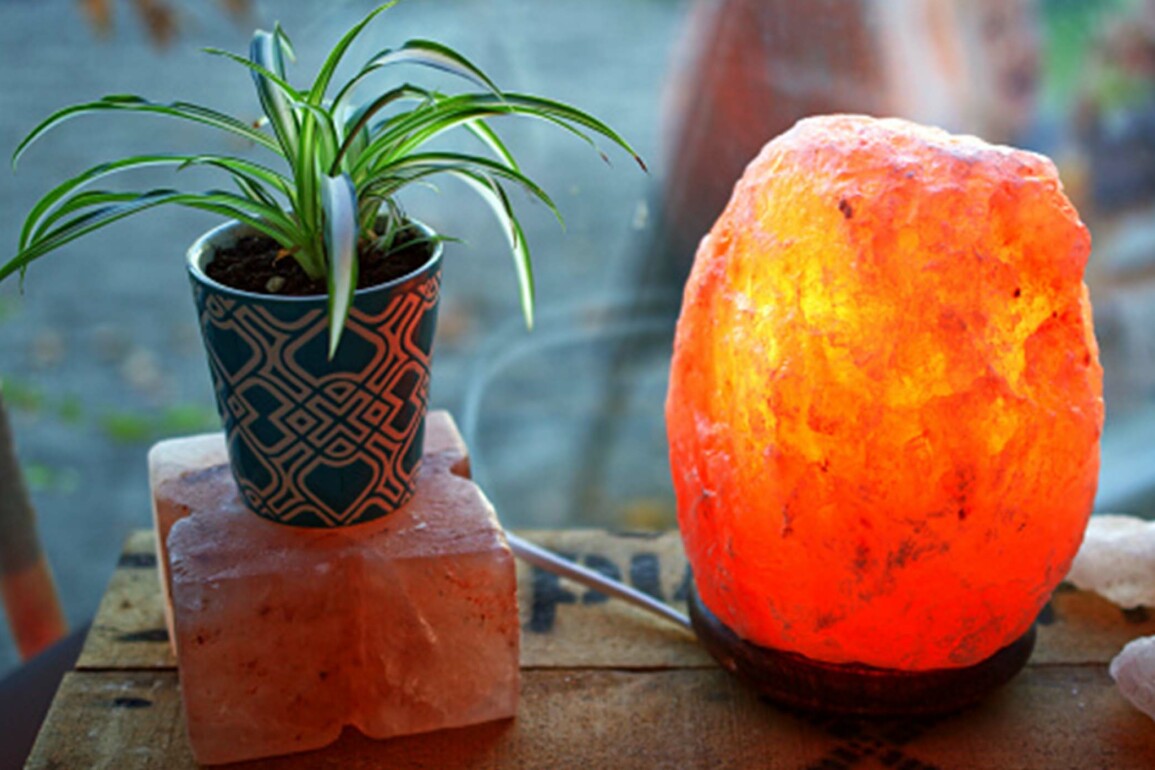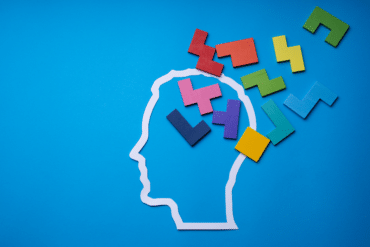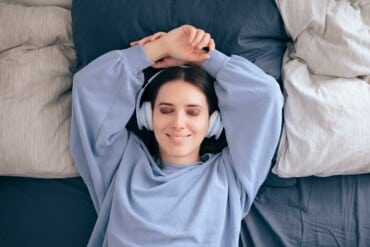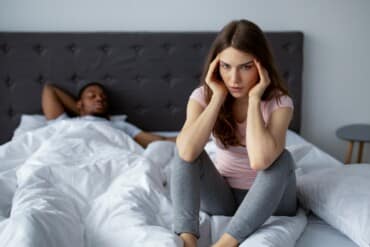You probably already know how significant the human response to light can be.
In winter, we’re more likely to suffer from feelings of anxiety and depression because our exposure to natural light dwindles. This creates a problem called Seasonal Affective Disorder or SAD.
In the spring and summer, waking up and exercising in the early hours of the morning can be an excellent way to increase our energy levels and reset the circadian rhythm.
We know that certain types of light are more likely to wreck our sleep than others. Countless studies have proven that spending hours scrolling through smartphone screens with blue light backgrounds can seriously harm your ability to snooze.
But, what if a special kind of therapy could chase away the symptoms of insomnia once and for all?
Welcome to your introduction to light therapy.
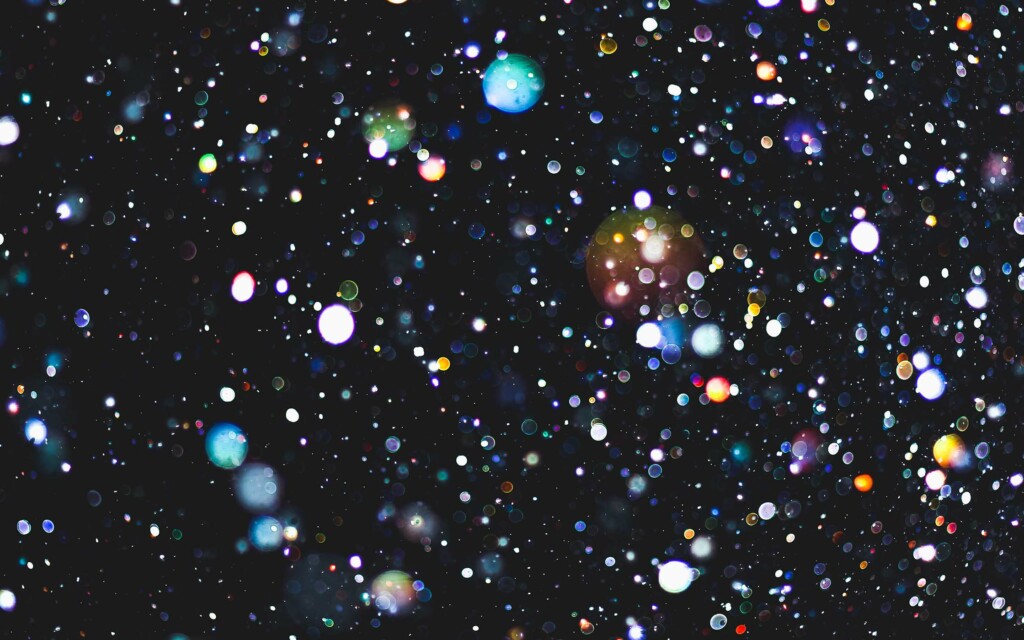
Light therapy basics: The snoozing spectrum
If you’ve ever wondered why you feel more awake and alert after your brisk walk outside to work, then we’ve got news for you. It’s not just the chill of the atmosphere that wakes you up; it’s the bright natural light of the sun too! The sun offers full spectrum light.
There’s a biological reason why human bodies respond to natural light. When our eyes absorb certain spectrums of light, signals to our brain are sent. Then the release of hormones and chemicals encourage everything from sleep to wakefulness and healing.
Light therapy for insomnia revolves around using different kinds of light to encourage healthier wake and sleep cycles.
For instance:
- Green light therapy: In green light therapy, green light wavelengths are used to create get-up-and-go energy. Green light exist in the middle of the spectrum, providing the kind of stimulation you can get from blue light, without the negative side effects.
Studies indicate green light therapy could be ideal for promoting wakefulness for overnight and shift workers, who have problems keeping their schedule on track. - Red light therapy: Red light is the best light wavelength for sleep and insomnia treatment. Existing at the far end of the light spectrum, red light helps to soothe the mind and induce melatonin production in the body.
Experts can use red light wavelengths to help people who struggle with their sleeping patterns to start feeling more tired around bedtime. Infrared light, at the very end of the red light spectrum, has even been shown to promote mitochondrial regeneration and healing.
- Blue light therapy: Blue light gives you the energy you need to stay awake and keep focused during the day. It’s the kind of light that hones your senses and makes it easier to concentrate.
Unfortunately, Harvard researches also found that because blue light suppresses melatonin production for longer, it can also have a negative impact on your sleeping schedules.
Too much exposure to blue light, particularly in the evening, could make it harder for you to drift off.
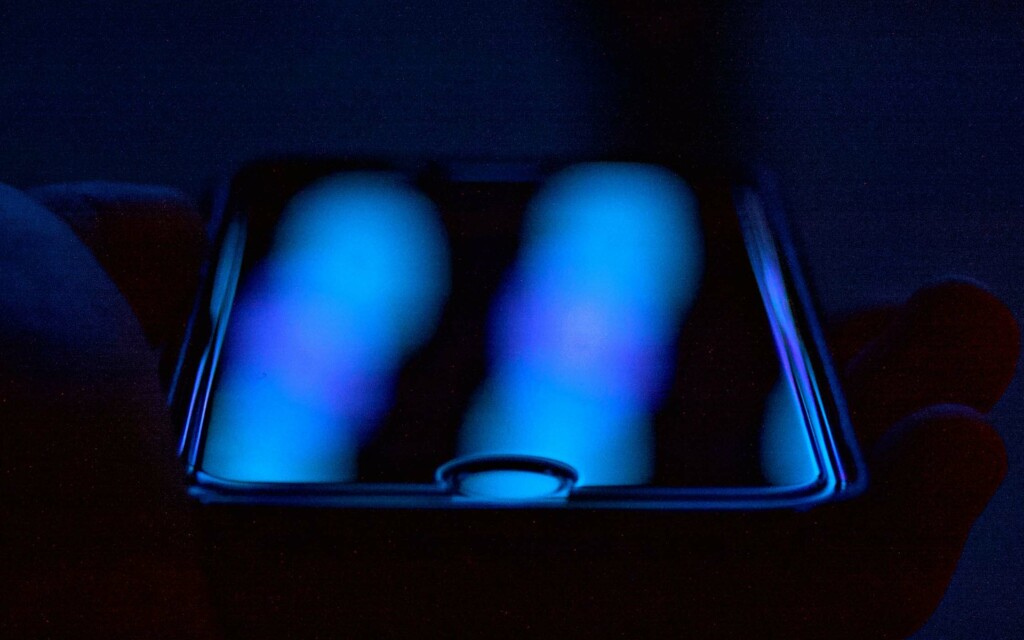
How does blue light therapy affect sleep?
When people mention blue light in relation to insomnia, they’re often referencing the negative impact. This kind of wavelength has effects on your ability to relax and unwind. Blue light is known for the harm it does to the circadian rhythm.
Because it’s designed to suppress melatonin production and keep you alert, blue light signals the sensors in your eyes to tell your brain to stay awake.
While getting blue light therapy from the sun during the day helps you to stay alert, simultaneously improving performance and mood, it has a downside regarding sleep.
The blue light in your digital devices appears if you don’t have your night-shift on. It can keep you awake for way longer than intended, particularly when you’re scrolling through your phone close to slumber time.
Blue light at night can lead to various symptoms associated with sleep deprivation, including metabolic syndrome and obesity.
The good news? Blue light can form part of a complete light therapy routine. Used first thing in the morning, it can help your body to wake up. What’s more, some experts are experimenting with the benefits of blue light for the treatment of depression too.
However, at night, it’s best to stick with red light therapy, the night-shift option or use blue light blocking glasses to reduce your exposure to blue light wavelengths. There are also certain apps you can download to force your phone into night mode with a majority of red light.
After all, you don’t want to suppress your production of melatonin.
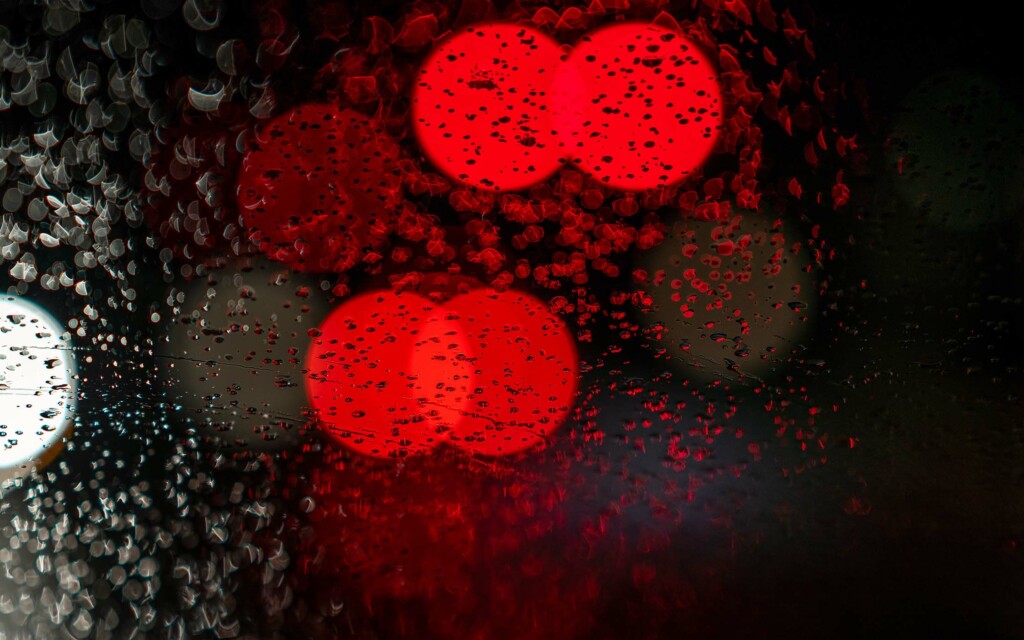
How does red light therapy improve sleep?
Red light therapy is at the core of the most light-focused treatments for insomnia. Known to some by the less memorable name, photobiomodulation.
This kind of insomnia light therapy involves sitting next to a box that releases light waves in the infrared and red spectrum.
Contrary to the ultraviolet waves from the sun, light emitted in this spectrum is incredibly safe and very useful. You won’t be exposed to any tanning and burning from red light box therapy.
What’s more, experts have begun to find that this kind of light therapy can also help with other things. Red light therapy have been found to heal skin, release antioxidants, and produce energy, rather than just assisting with sleep.
From a sleep perspective, the studies speak for themselves.
One piece of research conducted in 2013 analyzed the electrical brain activity of patients before, during, and after stimulation with red light therapy.
The study found that red light helped to support people with sleeping disorders in boosting melatonin production and falling asleep faster. Like watching a sunset, red lights can help to calm your senses and get you ready for sleep.
Another piece of research found that using red light therapy before you go to bed can also improve the quality of the rest that you get.
One study conducted among elite athletes in basketball found that sessions of 15-30 minute light therapy made a huge difference to sleep quality. The results indicated improved sleep and better performance the day after from the athletes.
The researchers believed that light therapy with red hues was a safe alternative to drugs for treating sleep issues.
Red light stimulates the parts of your brain that help to encourage sleep. Not only does the warming light soothe your senses, but it also produces more melatonin, which is crucial to your circadian rhythm.
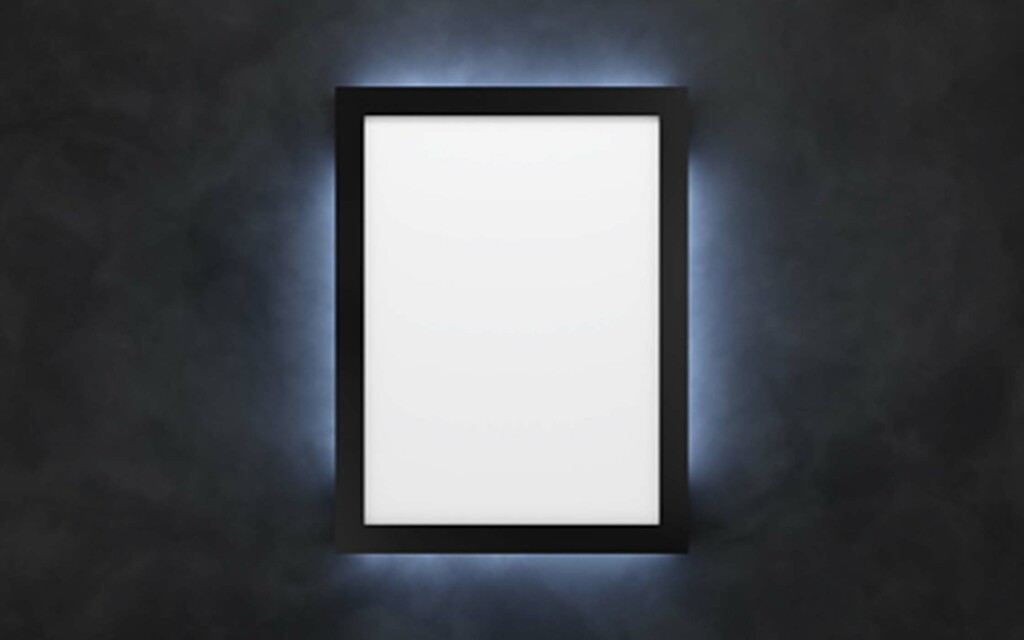
How does lightbox therapy work?
If you’ve considered investing in a light therapy lamp, then you might wonder how using this kind of treatment actually works. After all, there are a lot of different therapies out there for insomnia, and some are more complex than others.
The good news is that light box therapy is one of the easiest treatments to try for yourself. All you need to do is sit next to a select lightbox that’s capable of emitting the right wavelengths of light for your needs.
You may use different kinds of light throughout the day, like blue light in the morning, and orange and red lights in the evening.
Light therapy for insomnia helps to adjust your circadian rhythm. This is the rhythm that determines when you feel sleepy, and when you’re alert.
With light therapy, experts believe that you can create a routine that ensures that you wake up feeling ready to focus and go to bed without insomnia each night.
While light therapy lamps are available online and in stores, you might want to consider speaking to your doctor about your options first. There are some people that are likely to be more susceptible to this kind of therapy than others.
If you have eye disorders, light therapy may not be suitable for you. Additionally, if your sleep issues are caused by an underlying problem like sleep apnea, a lightbox won’t make a huge difference.
Speaking to a medical professional about your options when it comes to insomnia and light therapy should ensure that you approach this kind of alternative treatment in a safe and healthy way.
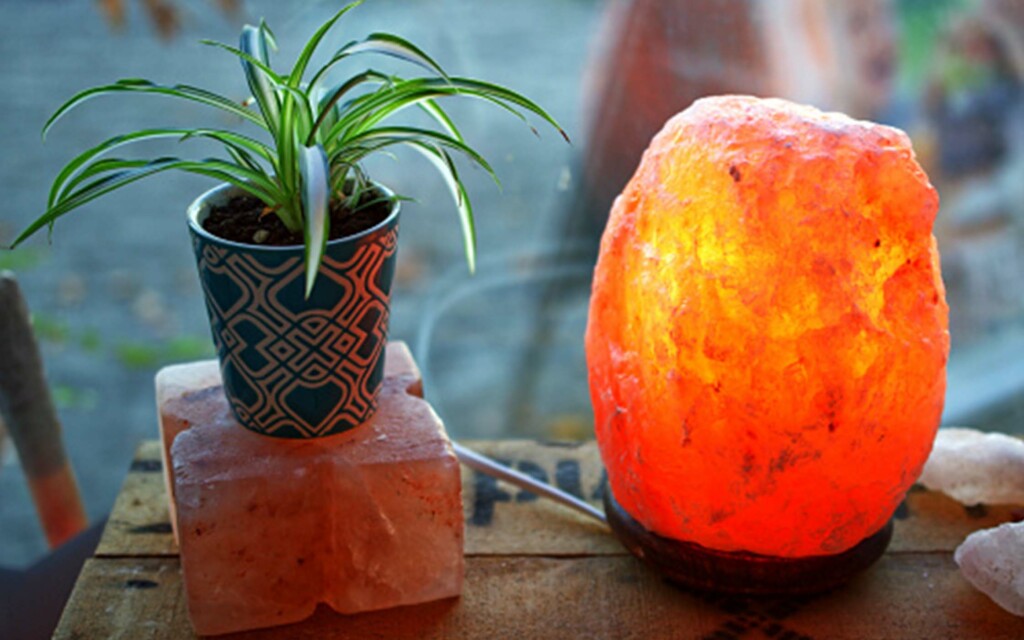
Should you invest in a light therapy lamp?
As mentioned above, light therapy can work for some people. Red light therapy has been proven in numerous studies to assist with encouraging sleep and improving the quality of sleep too.
Some people even refer to them as a mood lamp, as they feel better mentally when using them. Mood lamps have been proven to help with SAD (Seasonal Affective Disorder).
Light therapy is particularly helpful for people who suffer from insomnia caused by problems with their circadian rhythm.
If you work unusual shifts that cause you to constantly change your sleeping pattern, then a light therapy lamp could be the cure to your problems. Or if something else (like travel) has thrown your body clock off-kilter, then using some light technology, could get you back on track.
However, not everyone will be well-suited to this kind of treatment. Like all therapies for insomnia, light therapy is best for a specific subset of patients.
Speaking to your doctor about your sleep concerns will make it easier to determine what kind of alternative treatment method is right for you.
If light therapy isn’t your best choice, your doctor might suggest CBT. They may even ask you to take part in a sleep study so that they can get to the bottom of what’s causing your sleep disruptions in the first place.
Siestio. Sleep Matters.
General advice disclaimer
This article contains general tips and advice. However, no diet or exercise program should be started without consulting your physician or other industry professional first. For more information read our full disclaimer here.

